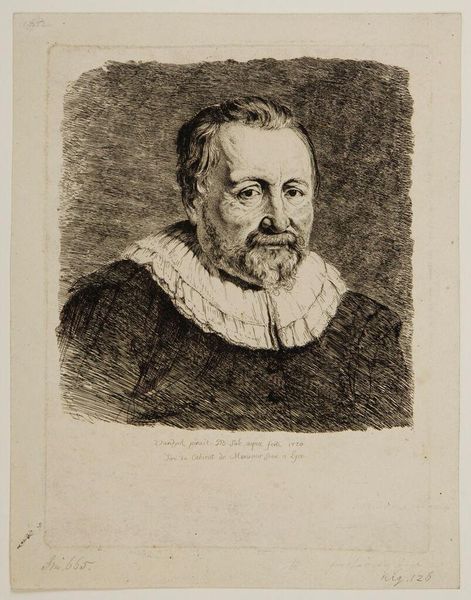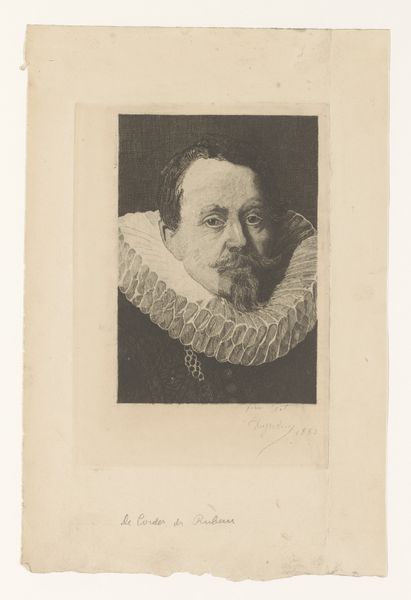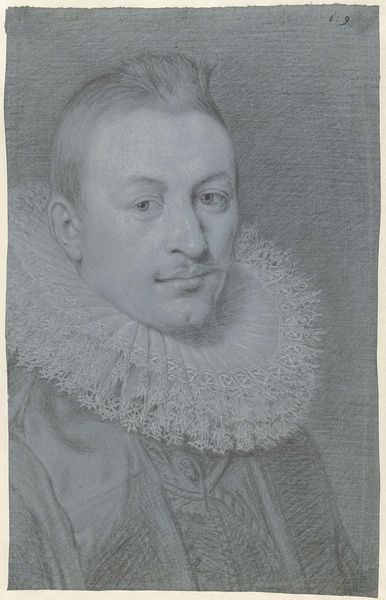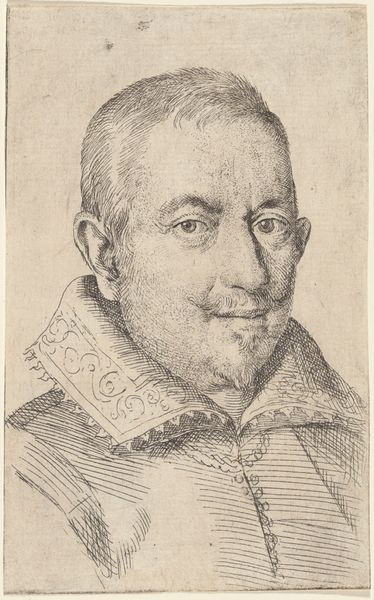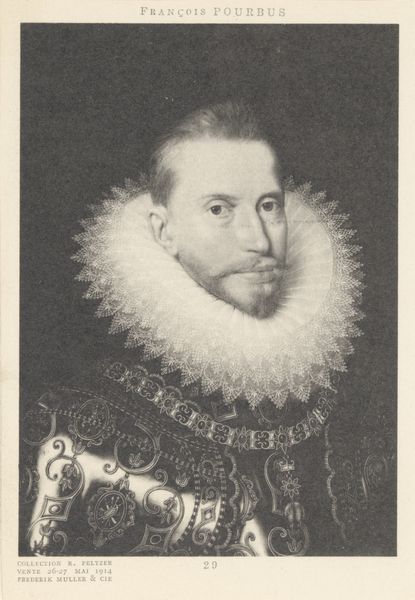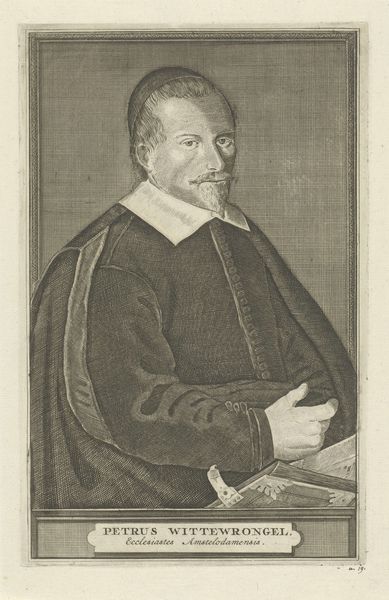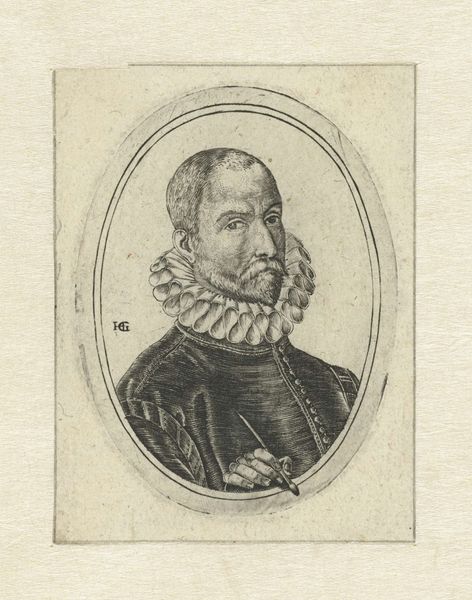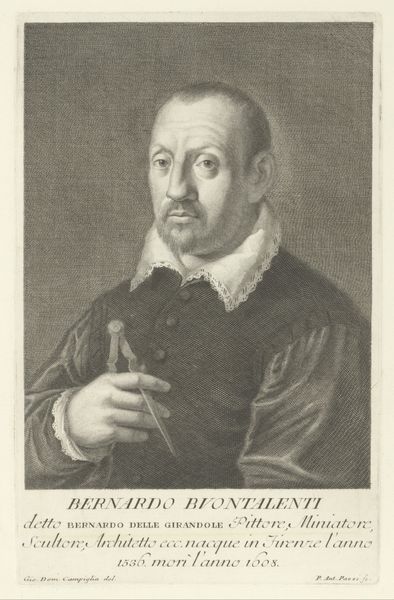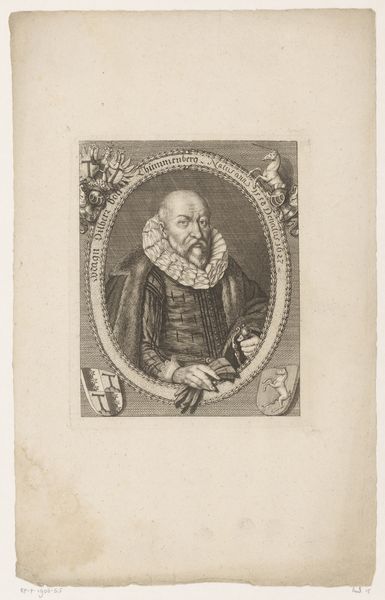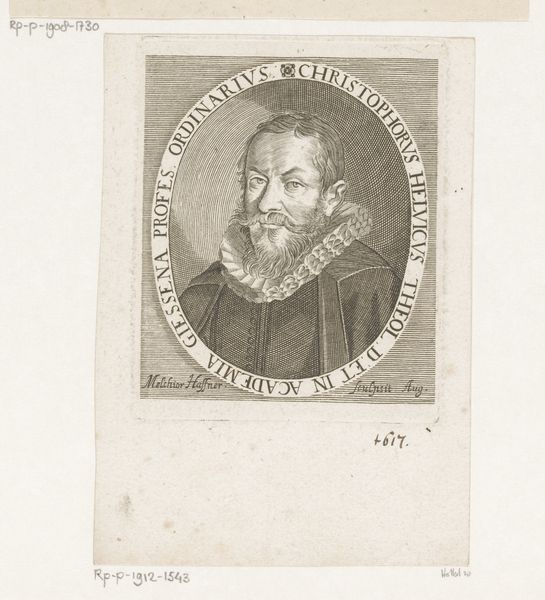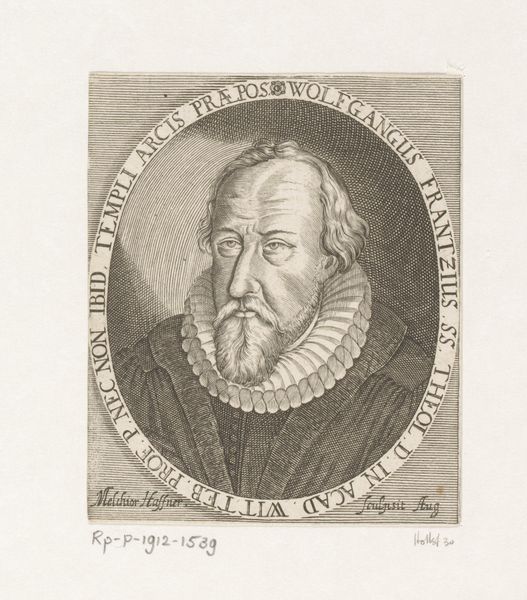
Dimensions: Sheet: 10 3/8 in. × 8 in. (26.3 × 20.3 cm) Plate: 9 1/2 × 7 1/8 in. (24.2 × 18.1 cm)
Copyright: Public Domain
Curator: As you observe this piece, you are looking at "Portrait, after Van Dyck," created by Jean Jacques de Boissieu in 1770. It’s an intaglio print, employing etching and engraving techniques. What's your immediate impression? Editor: It feels like a study in texture. The face is quite striking, but what grabs me are the visible hatching marks making up the ruff and the clothing. It's like the artist is revealing his working method. Curator: Precisely. Consider this not just as a copy, but a reinterpretation through labor. De Boissieu engages with Van Dyck, but through the very deliberate and reproducible act of printmaking. What implications does that hold for the work's identity? Is it simply imitation, or something more complex? Editor: I see it as a social leveling. The original Van Dyck would likely have been a unique oil painting, accessible only to the wealthy. This print, made using etching and engraving—both processes that allow for multiples—creates wider accessibility. It democratizes the image, though likely still reaching a certain educated class. Curator: And there lies an important point: who has access to art and how does that access affect social mobility and cultural power? It is worth discussing who gets to interpret history and how this process shapes our understanding of representation today. This piece seems like a reflection of that issue. Editor: I agree. Think about the tools—the etching needle, the engraving burin. These are instruments of reproduction and standardization. Boissieu, through his material choices, subtly comments on class and consumption in his era. Curator: Let's think, in broader terms, what this suggests regarding notions of authorship and originality. The layers of appropriation add depth, prompting crucial discussions on who controls narratives and cultural legitimacy. Editor: The hand of the artist, in its repetition, almost becomes a means of mass production, mirroring other social and economic shifts occurring in 1770. Curator: Seeing this piece again with your emphasis on its making really emphasizes to me how it encapsulates a complex interplay of art history, access, and societal currents, reminding us of the multifaceted layers inherent in art. Editor: Indeed. The tactile nature of printmaking emphasizes that every artistic decision has broader cultural ramifications and offers us insight into the artist’s relationship to their time.
Comments
No comments
Be the first to comment and join the conversation on the ultimate creative platform.
